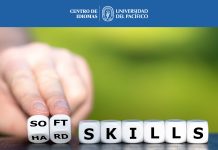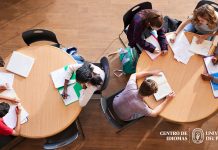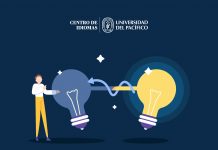By Carmen Hurtado
What is Metacognition?
Considered as the key to success for EFL learners, it refers to the mental process described as “thinking about thinking”. That is, what makes learners master their knowledge and learning process. It is also understood as a regulatory system that helps learners understand their cognitive performance by allowing them take charge of their own learning. It involves awareness of how they learn, an evaluation of their learning needs, generating strategies to meet these needs and then implementing the strategies. (Hacker, 2009).
There are two main components in the metacognition process: knowledge and regulation. The first consist of knowledge about oneself as a learner and the factors that might influence the learners’ performance. In other words, knowledge about strategies: when and why to use them, appropriately. The second one refers to the monitoring of the learner’s cognition. It includes planning activities, awareness of comprehension and task performance, and evaluation of the efficacy of monitoring processes and strategies (Cross & Paris, 1988; Flavell, 1979, Paris & Winograd, 1990; Schraw & Moshman, 1995; Schraw et al, 2006; Whitebread et al., 1990).
Metacognition in the classroom
It has been a bit confusing for some colleagues identify how this process is being developed in the classroom. As a mental process, there are two important roles to be highlighted: the teacher’s role as well as the student’s one. Teachers’ role consists of guiding the activities by applying the most appropriate strategies and techniques so students go along the complete metacognitive process while developing the given tasks. During this process, learners will ‘think aloud’ and perform the self-regulated learning process which describes an academically effective form of learning that includes metacognition, indeed.
Metacognitive strategies
Researchers have done their contributions to illustrate how these strategies influence language learning and teaching. Learners who can effectively use metacognitive strategies are aware of their own thinking as they perform a task and can use this awareness to control what they are doing. Thus, in the classroom teachers may apply the following strategies at their convenience: evaluating the way of thinking and acting, identifying the difficulty, paraphrasing, elaborating and reflecting learner’s ideas, clarifying learner’s terminology, problem-solving activities, thinking aloud, journal-keeping, cooperative learning, modeling, etc.
It is also important to point out that metacognition is not a linear process; it demands the use of several strategies to promote second language learning. To provide opportunities for students to think how they integrate strategies raises the assertiveness in terms of strategy use.
Summing up
In the field of autonomy, learners develop confidence and motivation toward their process of learning. They are able to face future unfamiliar and challenging tasks in different contexts inside and outside the classroom. So if having learners respond questions like “(1) What am I going to accomplish? (2) What strategies am I going to use? (3) How well am I using them? (4) What is the outcome? (5) What else could I do? will allow them reflect on the processes of their learning. The third question corresponds to monitoring strategy use, while the fourth and fifth relate to the evaluation of one’s own learning.
Now let’s share some views. How is metacognition promoted in ´your’ classroom? Do you have some strategies that work best for you and your students? We would like to get your comments and stay tune for the coming articles.
References:
Metacognition: A Key to Success for EFL Learners
A metacognitive perspective on the growth of self-regulated EFL student writers
Metacognition: Nurturing Self-Awareness in the Classroom
Image credits: http://infoyarturo.blogspot.pe/2010_11_01_archive.html
Biodata
Carmen Hurtado, graduated in the Educational Field; holds a Bachelor’s degree in Science of Education, and the title of Licenciada en Educación by ‘Universidad Nacional de Educación’. She has also finished her master’s studies in Teaching English as a Foreign Language at Universidad de Piura, and taken some specializations in the EFL and Spanish field. She has worked teaching English and Spanish at prestigious schools, institutes and universities for over 20 years. She currently works teaching online and blended courses at university. Her expertise, dedication and interest to research in the educational field have taken her to participate as a lecturer in the late six Annual Congresses at CIDUP. She works as a pedagogical specialist and a member of the Research Area at Universidad del Pacifico Language Center.
Estimated reading time: 3 minutes, 45 seconds












An inspirational article written by an outstanding teacher that every teacher should read
Thank you very much Lila. It is indeed and my pleasure sharing some views with wonderful colleagues like you. Stay tune!
Nice article Carmen. Your research and technique of using metacognitive strategy to learn language is absolutely fantastic. I feel professors must try this to get fruitful results. I wish to read more such nice articles.
Thank you for following us Kaustubh. The article sums up what was presented in one of the workshops at CIDUP last October 2016. We will continue working on more of them and hope you all enjoy and make some comments on them.
Best,
🙂
Hi there!
To answer your question, I'd like to share a bit on neuroscience and psychology as it's been part of my teaching strategies at different levels, learners, and ages:
*First, teach learners how their brains work since brains affects their performance. Hence they will certainly engage in reflective thinking, and several parts of the brain will be activated.
*Encourage learners practice recognizing what they don't understand, which turns out develop self-awareness. Minutes before the end of a challenging class ask, "What was most confusing about the material we explored today?" This pumps up a classroom culture that considers 'confusion' as an integral part of learning.
*HOTS-questions are key in class to help learners recognize their own cognitive growth. HOTS-questions like How has my thinking about procrastination changed since taking this course?
*Prompt students keep learning journals. Assign a question every week such as: What was most challenging for me to learn? Why?
To brush up what they were reading, ask them create mind maps, facebook/tweet posts, diaries, lists, e-tools, etc.
*Regard essay -multiple choice questions- as a prior tool to evaluate higher-level metacognitive skills.
-Facilitate reflexive thinking -IB students. Turns out awareness of our biases -prejudices that get in the way of healthy development. Nowadays there is a need for creating a classroom culture for deeper learning and reflexivity by encouraging dialogue that challenges human and societal biases. When students engage in conversations or write essays on biases and moral dilemmas related to politics, wealth, racism, poverty, justice, liberty, etc., they learn to "think about their own thinking." They begin to challenge their own biases and become more flexible and adaptive thinkers.
I feel pretty sure there are numberless techniques some teachers may use.
Thanks for following us Marlon. 😉
Hello Cecilia. Thank you for sharing your expertise and leaving such wonderful comments. As you well say ,creating cognitive conflict is really helpful if both teachers and learners are in the right frame of mind. That is, not making it to turn into a monotonous activity (teachers), neither feeling they are not making much progress (students). The skills development will be achieved as expected, If we monitor learner’s work appropriately. However, there are some other myths we all need to work on, which by the way is the topic of our next posts.
Keep following us!
Very interesting article, a student who is conscious of how learning takes place will surely get more successful results.
Hello sabi. Thanks for your comment and for sure he/she will if being guided by the teacher or instructor appropriately.
Keek following us.
Comments are closed.